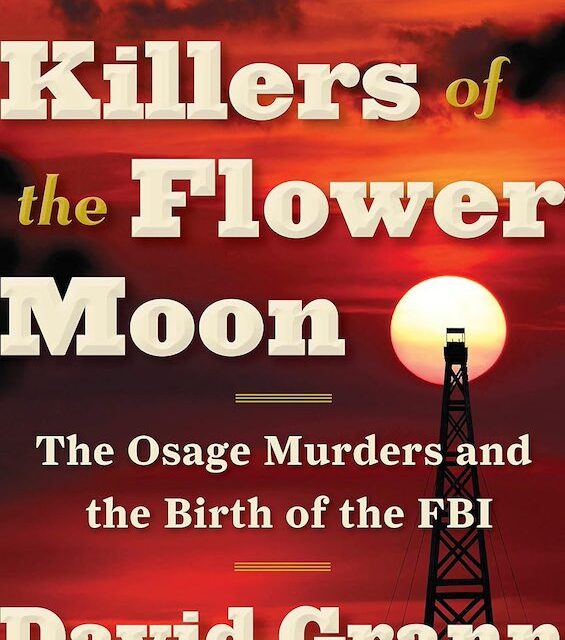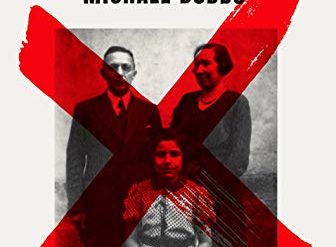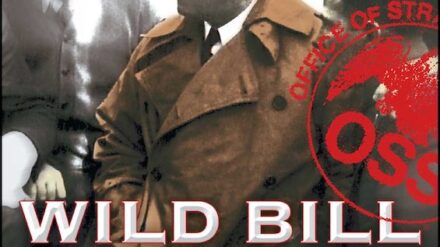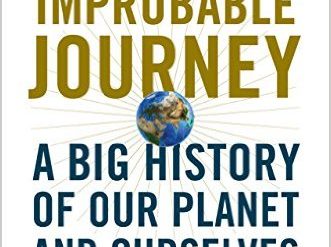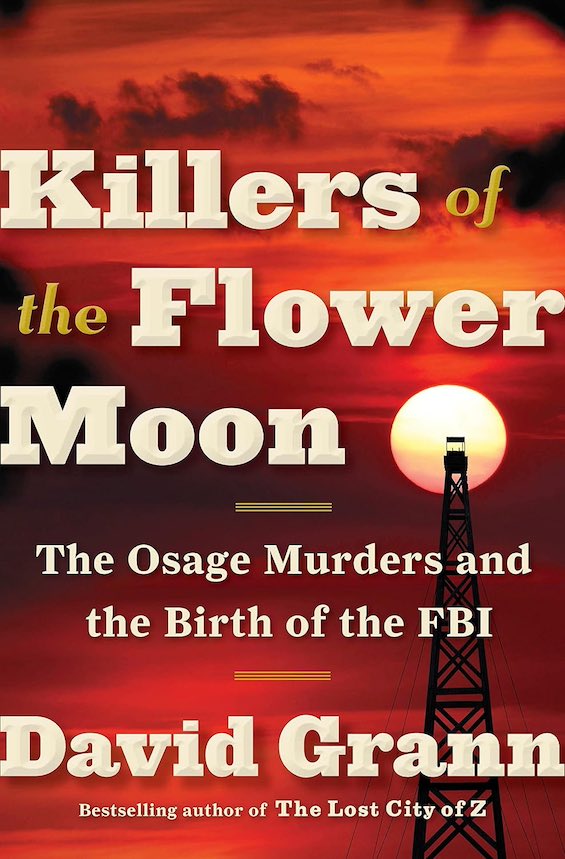
Estimated reading time: 7 minutes
When Christopher Columbus arrived in the New World, an estimated 50 million people lived in the Hemisphere. Somewhere between seven and 18 million of them inhabited North America. By 1890, the population of indigenous people in the United States had been reduced to 248,000. Countless millions had died, as the result of genocidal policies and epidemic disease carried by European settlers. By the 20th Century, hundreds of native communities eked out a minimal existence in and near the reservations where they had been forced to move. And one of those Native communities gained nationwide attention a century ago following a series of murders that became the FBI’s first big case. And that’s the troubling subject of Killers of the Flower Moon by New Yorker staff writer David Grann.
The shrinking world of a Native American people
In most respects, the Osage Nation was typical of the more than 600 North American Indian tribes. Once numbering tens or hundreds of thousands, the Osage were masters of a vast territory spanning what are now the states of Missouri, Arkansas, and Oklahoma. Recurrent smallpox epidemics and waves of settlers dramatically reduced their numbers and forced them from the first reservation they were allocated in Kansas early in the 19th Century. Following a treaty in 1870, the survivors were forced to move into a new reservation in north-central Oklahoma that is their current home. They purchased the land, deliberately selecting an arid, hilly area unsuitable for farming in hopes that white men wouldn’t take it away from them.
This post was updated, illustrated, and expanded on October 26, 2023. Originally posted five years earlier.
Killers of the Flower Moon: The Osage Murders and the Birth of the FBI by David Grann (2017) 347 pages ★★★★★
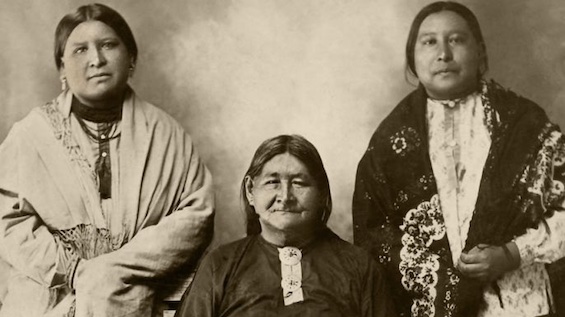
“The wealthiest people per capita in the world”
In 1907, a brilliant chief negotiated an agreement with the U.S. government allowing the Osage to retain all mineral rights, even if the land itself were sold. Soon afterward, oil was discovered there. The reservation sat on “some of the largest oil deposits in the United States.” By the 1920s, some three thousand Osage—a third of the number 70 years earlier—had become fabulously wealthy. “In 1923 alone, the tribe took in more than $30 million [in royalties], the equivalent today of more than $400 million. The Osage were considered the wealthiest people per capita in the world.”
Corruption, sponsored by the federal government
Killers of the Flower Moon by New Yorker staff writer David Grann reveals the consequences of this new wealth. Many Osage spent their money ostentatiously, attracting thieves, con men, and profiteers to the reservation; some white men married Osage women in what seemed an obvious ploy to gain control of their wealth. In 1921, a new federal law was passed requiring “any Osage of half or more Indian ancestry to be appointed a guardian until proving ‘competency.’ Minors with less than half Osage ancestry were required to have guardians appointed, even if their parents were living.” Prominent local white men such as lawyers, bankers, businessmen, and ranchers were appointed as guardians. The scene was set for corruption. “One government study estimated that before 1925 guardians had pilfered at least $8 million [$136 million today] directly from the restricted accounts of their Osage wards.” But even that massive thievery didn’t satisfy the local powers-that-be.
Two dozen murders in four years, none of them solved
In 1921, two Osage unrelated to each other were found murdered, and more than 20 others followed by 1925. The local sheriff badly bungled the Investigations. “Virtually no evidence had been preserved from the various crime scenes.” Private eyes brought in to investigate failed to discover the killers. A local lawyer obtained documentary evidence pointing to at least one of the murderers, but both he and the man who had given him the documents were themselves murdered; the documents disappeared.
Enter the FBI
Pleas from the Osage council to Washington for federal intervention finally bore fruit in 1925. The Bureau of Investigation (later the FBI) under its newly appointed director, J. Edgar Hoover, dispatched a team of investigators headed by a former Texas Ranger named Tom White, who proved to be a perfect choice. Incorruptible, dogged, and knowledgeable about the new “scientific” methods of policing.
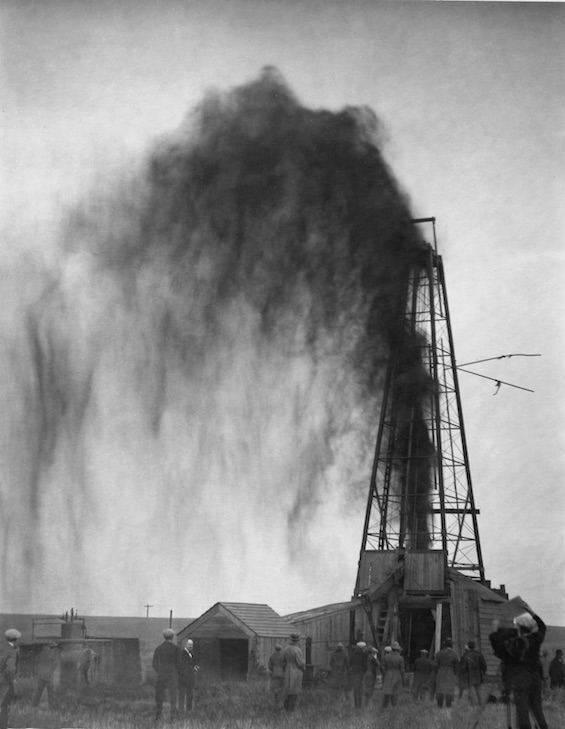
White uncovered a conspiracy led by a “domineering cattleman” named William K. Hale, who was known locally as the “King of the Osage Hills.” Hale and two nephews, both of them married to Osage women, were clearly responsible for at least four murders. White put them on trial—and encountered a “litany of dead witnesses,” crooked doctors and undertakers, witness tampering, manufactured evidence, and a local jury’s reluctance to convict a white man of murdering an Indian. Only in a second trial the following year did he succeed in gaining a conviction for Hale, one of his nephews, and an accomplice.
More murders than ever revealed
In researching the “Osage Reign of Terror” eight decades later, Grann came across claims again and again that the 24 murders that brought in the FBI only hinted at the scope of the killing. Through exhaustive digging in archival records, he turned up evidence that the murders had begun at least three years before 1921 and lasted for six years after 1925. “Scholars and investigators who have since looked into the murders believe that the Osage death toll was in the scores, if not the hundreds.” Grann ends this deeply engrossing and troubling book quoting Cain after he killed Abel: “The blood cries out from the ground.”
About the author

David Grann was born in 1967 in Connecticut, the son of an oncologist and the former CEO of Putnam Penguin, who was the first woman CEO of a major publishing firm. He graduated from Connecticut College with a BA in Government and began work as a freelance journalist. He then earned a master’s degree in international relations from the Fletcher School of Law and Diplomacy at Tufts University. Established in journalism as a writer and editor, he earned a master’s degree in creative writing from Boston University, hoping to become a novelist. But he soon took on a role as a staff writer at the New Yorker, where he continues today. Grann is the author of three works of nonfiction and a book of essays. His books and many of his articles have been adapted to film. He has two children and lives in Westchester County, New York.
For related reading
Killers of the Flower Moon is David Grann’s second book. The first, a New York Times bestseller, was The Lost City of Z: A Tale of Deadly Obsession in the Amazon (Pre-Columbian civilization in the Amazon). And the third was The Wager: A Tale of Shipwreck, Mutiny, and Murder (This bestselling maritime drama is hard to put down).
You may enjoy browsing through 20 top nonfiction books about history.
For more good books on the history of the US, see Top 20 popular books for understanding American history.
And if you enjoy reading history in fictional form, check out 20 most enlightening historical novels.
And you can always find my most popular reviews, and the most recent ones, on the Home Page.

